The Papua Blog
The Baliem Valley
Home of the Dani tribe: A brief introduction
Words and photos by Marc Weiglein
SHANGRI-LA*
Exploring the tribes of the Baliem Valley is an adventure not to be missed for those seeking an exotic and culturally rich experience in Indonesia. The valley is home to the Dani and Lani tribes, who have inhabited the lush and fertile region for centuries.
Located at an altitude of 1700m, the Baliem Valley stretches approximately 75km in length and up to 15km in width. It remained undiscovered by the Western world until 1938, when the American explorer Richard Archbold stumbled upon it. This was a groundbreaking discovery as it was previously believed that the central highlands were nothing but high mountains, and suddenly there was a vast and fertile valley teeming with life.
Often referred to as the real Shangri-La, the Baliem Valley has undergone significant development since the mid-1970s, but not all of the tribes have been strongly affected by the encounter with modernity. The Dani tribe is particularly notable for their unique cultural practices, including their close relationship with pigs (more on that later).
*Def.: Shangri-La: A remote beautiful imaginary place where life approaches perfection.
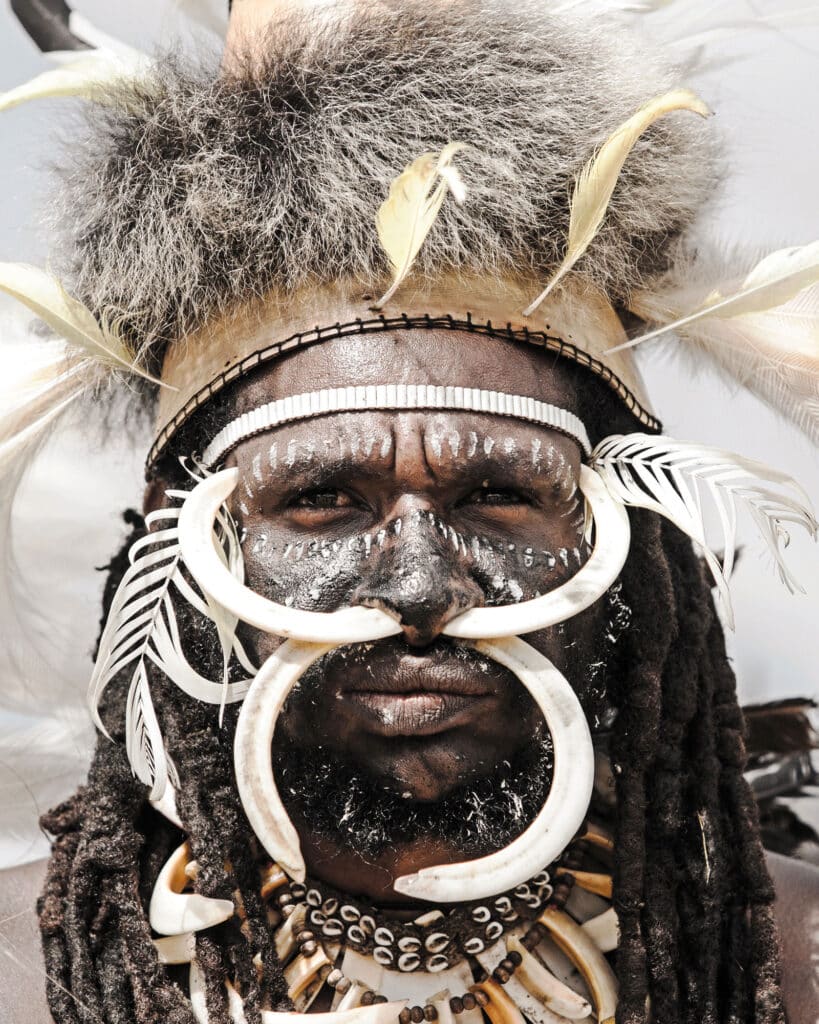
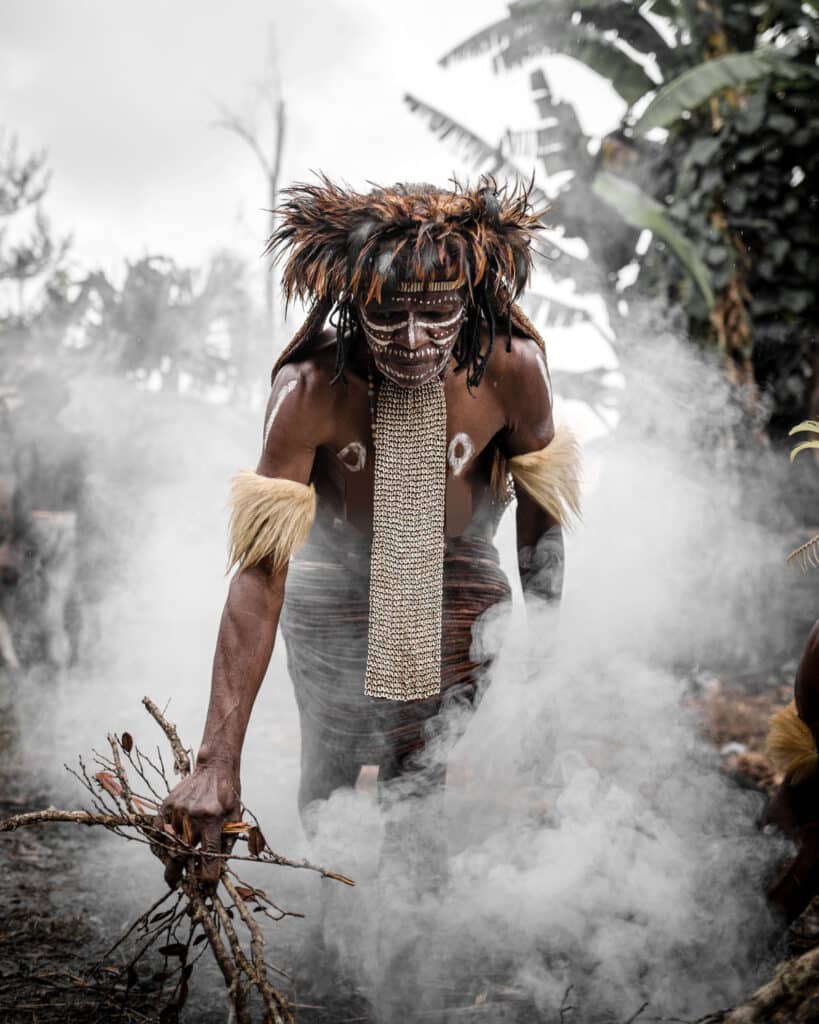
LIFE THEN AND NOW
In the past, the Dani people lived in relative isolation, with their main means of subsistence being agriculture and pig farming. They lived in small, isolated communities, and their social and economic life was largely based on traditional customs and beliefs. Today, the Dani people’s way of life is still very traditional. Most of them still live in the fortified settlements called hamlets, enclosed by simple wooden fences that are accessed via ladders. The village is centered around the men’s house, with family huts and a shared cookhouse nearby.
Traditionally, Dani men wear only a hollowed-out gourd called a koteka. Older men still wear only godeka, while younger men opt for Western clothes except on special occasions. Women usually wear a skirt made of woven bark, but those who are wealthy may wear a skirt made of orchid fibre. Both men and women wear jewellery made from shells, bones, seeds and colourful bird feathers. Men are also famous for their nose piercing: the tusks of a wild boar are pushed through the septum to give the wearer the strength and dangerous appearance of the animal.
The Dani practice a form of agriculture known as slash-and-burn farming, in which they clear patches of land and burn the vegetation to create nutrient-rich soil for crops such as sweet potatoes and taro. They are skilled at cultivating even the steepest mountain slopes, growing a variety of crops such as sweet potato, tomatoes, cassava, avocado, and cucumbers, among others, in the fertile valley.
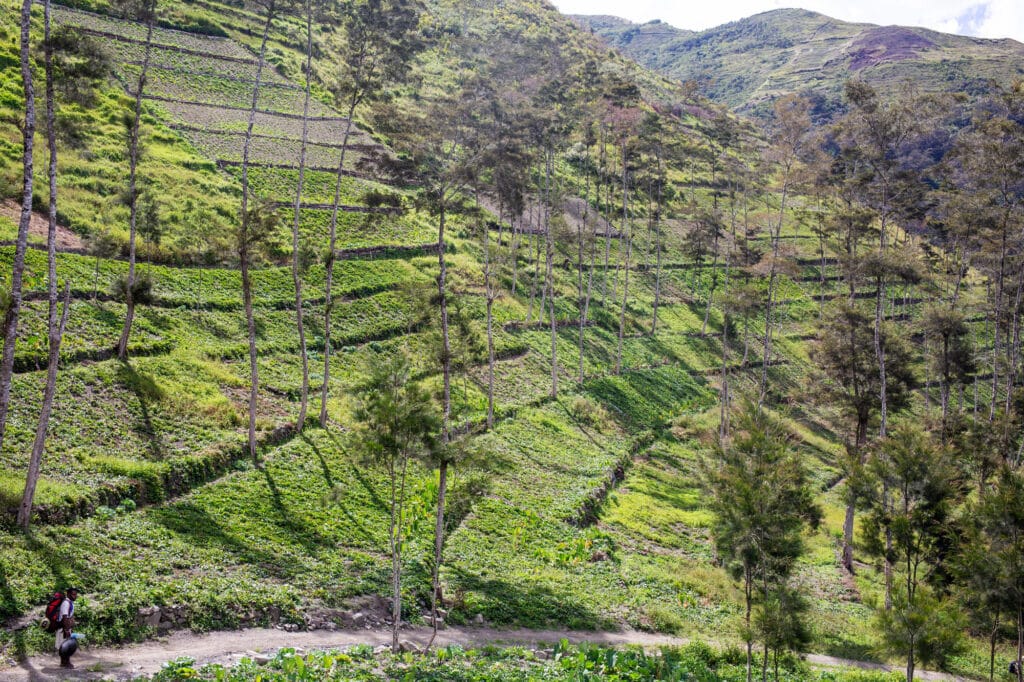
WAM(ENA)
Pigs are considered the most valuable possession of the Dani tribe, and they play a central role in their social, cultural, and economic life. The Dani word for pig is “Wam” and that is how the city of Wamena got its name. The Dani believe that pigs are essential for their survival, and they are raised for various purposes. They use them for food, ceremonies, and as a means of exchange in the local economy. Pigs are also used as a symbol of wealth and social status, with the size and number of pigs owned by a family or individual reflecting their prestige in the community. Pigs are treated with great care and affection by the Dani people, who often keep them inside their homes to protect them from predators. They are fed with special foods and are given names that reflect their personalities and characteristics. When a pig is slaughtered, it is done so in a ritualistic manner, with the meat being shared amongst the community in a communal feast.
The Dani are famous for their elaborate pig festivals, which involve slaughtering dozens of pigs and cooking them in an underground pit for hours. These feasts are an important part of Dani culture and are often held to mark special occasions such as weddings and funerals. In addition to these traditional pig festivals, many smaller pig festivals are held in modern times. No political or major event is held without a pig feast, and pig feasts are also organised for tourists. For the hosting village, such small pig festivals are a welcome distraction and usually the whole village comes together to enjoy a piece of the cherished pork.
Overall, the Dani people’s relationship with their pigs is a complex and multifaceted one, based on mutual respect and dependency. Pigs are not just a source of food and wealth for the Dani people but are also considered members of their family and community, and are deeply valued and cherished.
FYI: In addition to the pigs, the valley is home to several species of birds of paradise, including the stunningly beautiful Superb Bird of Paradise (the “blackest” creature on earth, google it) and the King of Saxony’s Bird of Paradise, which is found nowhere else in the world.
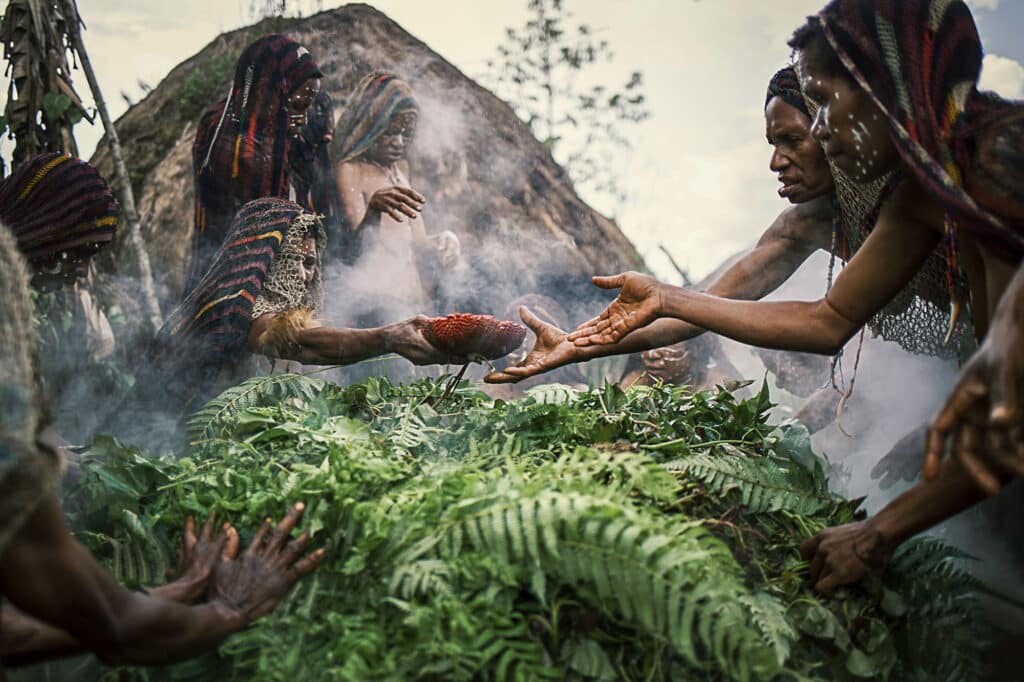
TOURISM IN THE BALIEM VALLEY
The Baliem Valley has yet to fully develop its tourism industry, as access to the valley is still primarily by air. Due to logistical constraints, modernisation efforts have been slow and progress towards economic development has been relatively modest. As a result, the growth of tourism in the region has been limited and little of the local population is dependent on, or accustomed to, income from tourism. This has created a relaxed and authentic atmosphere that continues to this day.
HOW TO GET THERE?
As said, the Baliem Valley can only be reached by plane. The airport of Wamena (airport code: WMX) is the only connection to the outside world. If you want to fly here, you have to fly to Jayapura (airport code: DJJ) first and then on to Wamena. The route between Jayapura and Wamena is served by WingsAir (our recommendation) and TriganaAir. For more information, see our blog entry How to get to Papua.
POPULAR TOURS AND EXCURSIONS IN THE BALIEM VALLEY
The Baliem Valley presents an exceptional opportunity for visitors to immerse themselves in the rich cultural heritage of Papua. The area boasts a remarkably robust and enduring culture, and beyond the urban center of Wamena, inhabitants continue to maintain a traditional way of life amidst a virtually untouched natural environment. The climate is notably temperate and not subject to tropical conditions, allowing visitors to enjoy a comfortable stay without worrying about tropical diseases such as malaria, due to the high altitude and moderate temperatures. The Baliem Valley can be explored through a variety of day tours of varying levels of difficulty, ensuring that all visitors can enjoy an experience to suit their preferences.
Popular day tours include:
– Visit the salt spring and chief’s mummy at Kurulu.
– A hike from village to village in the southern Baliem Valley, far from the road
– The Kotilola Cave and the chief’s mummy of Meagaima
– Lake Habbema, Indonesia’s highest lake
– Attend a pig festival
Tour packages usually include a pre-selection of recommended day tours. Here is a sample 6 day itinerary: Baliem Valley Culture Tour
Longer trekking tours are also possible and offer a great and unspoilt outdoor experience for anyone with the necessary fitness. Trekking in the mountains can be challenging and the basic conditions in the overnight camps are not suitable for everyone. Here is a sample trekking itinerary: 4-day South Baliem Trekking
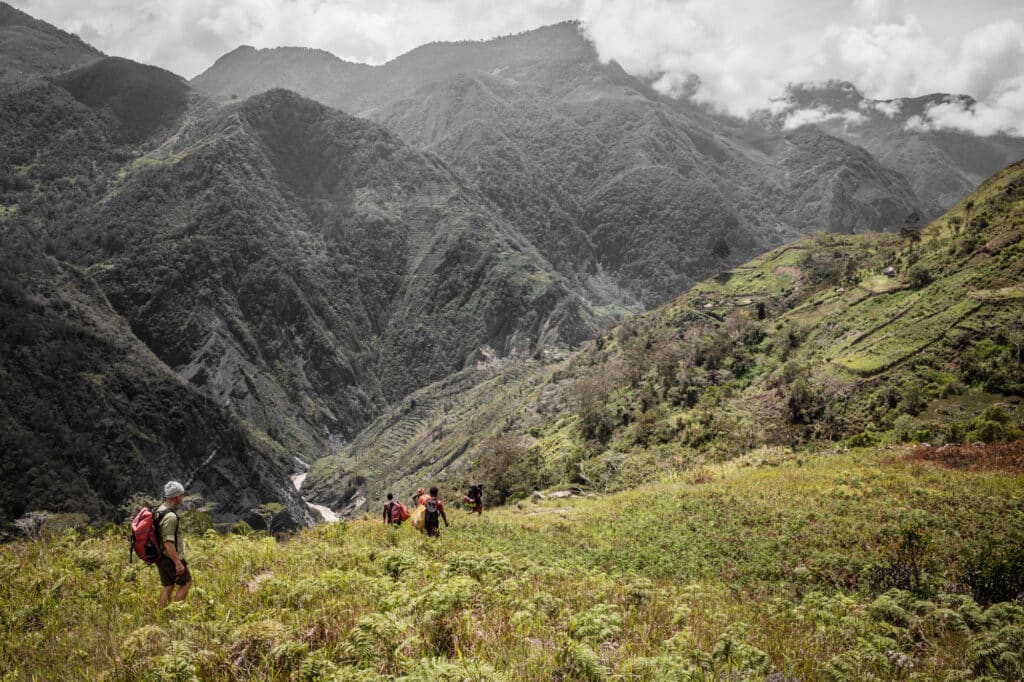
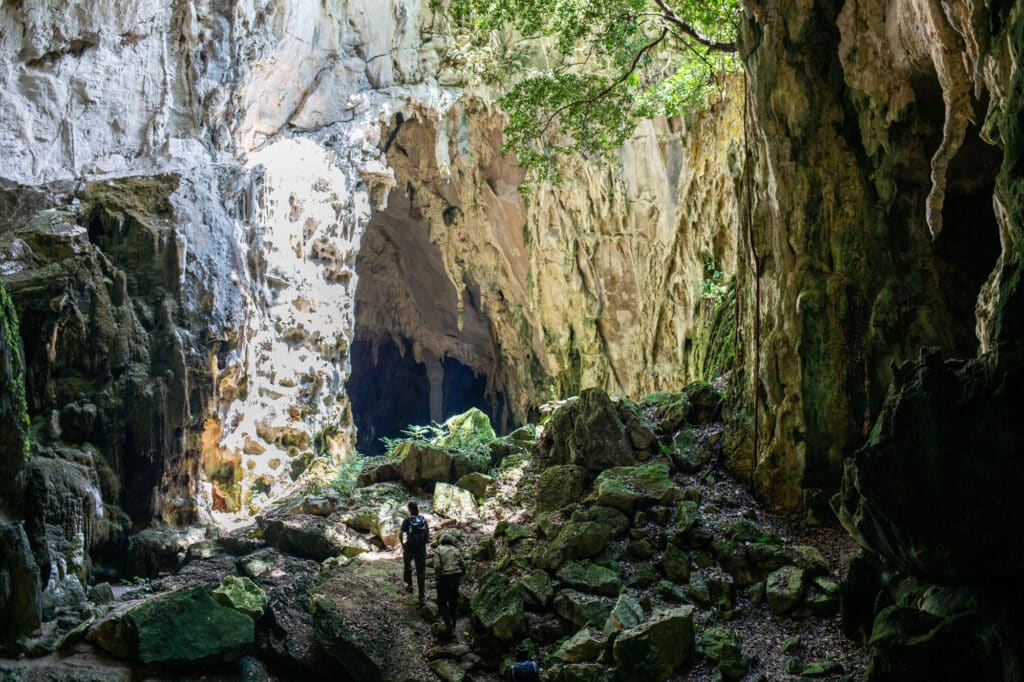
PERSONAL NOTE TO WRAP IT UP
For me, the Baliem Valley is the most captivating destination in Indonesia. The temperate cool climate, the spectacular mountain scenery, the almost untouched nature, and the total lack of tourist infrastructure is a combination that is very hard to find in our world, if at all. Combine this with the fascinating culture of the Dani and Lani tribes and you have found what I like to call “the most genuine place in the world”. And keep in mind that to this day it is not easy to get there, which ensures that the commercialization and infantilization of the Baliem Valley as a travel destination will not happen any time soon.
In short, it is a hard to reach place, with real people, for real travelers.

